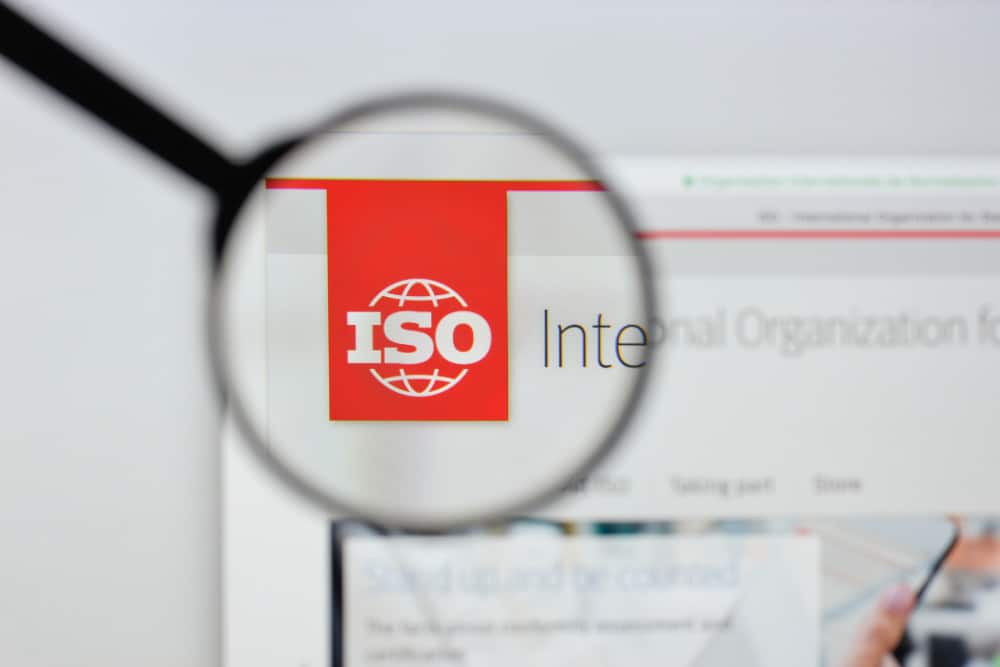Standards are a common set of guidelines and requirements created by manufacturers, OEMs, or governing bodies — and they’re everywhere in the fastener industry. Depending on the standard, these guidelines can apply to just about any aspect of fastener manufacturing, including quality management systems, materials, dimensions, threads, surface coatings, or head markings.
There are hundreds of these standards out there, all of which serve different purposes and were created by various authoritative organizations in the industry. In this article, we’ll discuss just one of those sets of standards for fasteners: ISO standards. We’ll explore what they are, why they’re important, and how they differ from other standards sets for fasteners.
What Are ISO Standards for Fasteners?
ISO stands for The International Standards Organization, which is an international organization that creates and publishes widely used standards for a multitude of manufacturing applications — not just for fasteners. In fact, fastener standards are just a small blip in the vast world of ISO standards. But, of course, they’re the ones that are most important to us here.
The ISO started developing fastener standards almost 50 years ago. Since then, these standards have become one of the most widely used regulatory systems for assembling internationally traded goods. Many manufacturers and authorities have even pushed for complete elimination of other standards sets, in support of fully utilizing ISO standards for consistency across borders.
RELATED: Need a specialty bolt, screw, or stud? Wilson-Garner can help.
4 Examples of ISO Standards for Fasteners
All that being said, these standards are a big deal for fastener manufacturers everywhere. To give you a better understanding of what they look like and how they work, here are just a couple examples of commonly accepted ISO standards. Again, it’s important to keep in mind that these are only four of the many applicable ISO standards for fasteners.
- ISO 9001:2015 – This isn’t a fastener-specific standard, but rather one of the most well-known quality management standards in the world. It outlines all the requirements for a company’s quality management system (QMS), which includes all the policies and procedures that ensure their products and services meet customer requirements and uphold every aspect of quality. You can read more about it in this past blog of ours, if you’d like.
- ISO 17025:2017 – Again, this one isn’t fastener-specific. Instead, it’s a testing and calibration standard for laboratories that test, sample, or calibrate their own parts or other clients’ parts. It ensures competence, impartiality, and consistent testing and calibration methods.
- ISO 16047:2005 – This is a standard for torque-tension testing requirements for threaded fasteners. These tests measure the input torque required for a bolted joint to achieve a specific tension, and this standard ensures the proper conditions are in place for testing accuracy.
- ISO 898-1 – This is the most commonly used metric specification for bolts, screws, and studs made from carbon steel and alloy steel. It outlines the requirements for 10 property classes, which are the metric equivalents for a grade in “inch” terminology. For a more detailed look at this standard, check out this past blog of ours.
Why Are ISO Standards for Fasteners Important?
There are many reasons that make ISO standards for fasteners important, but they all boil down to two main ideas: quality and consistency.
In regards to quality, ISO standards help manufacturers examine and assess their fasteners during all stages of production. This is all in an effort to make quality, strong fasteners that can be used to assemble products that are durable and safe for use.
In regards to consistency, ISO standards provide a great basis for national and international regulation. When fastener parts all over the world are manufactured in adherence to the same standards, it saves time and energy by reducing barriers to international trade.
Other Standards for Fasteners
As mentioned previously, ISO standards are just one of the many sets of standards for fasteners, created by one of the many authoritative industry organizations. Some other common standards from different organizations include:
- DIN standards – DIN stands for Deutsches Institut für Normung, or The German Institute for Standardization. They’re less internationally recognized and are being replaced by other international and European standards — now only being issued for products without an ISO or EN standard.
- ASME standards – ASME stands for The American Society of Mechanical Engineers. They’re a little less comprehensive than ISO standards, aiming to concentrate on five main industries in the future: bioengineering, robotics, clean energy, manufacturing, and pressure technology.
- ASTM standards – ASTM standards for The American Society for Testing and Materials. It was one of the first standards sets established, and it now focuses on six types of standards that relate to the manufacturing process: test method, specification, classification, practice, and guide and terminology standards.
No matter which type of fasteners you purchase from Wilson-Garner, you can be assured that they are high-quality and up to industry-specific standards. We provide our clients with products that meet their unique specifications and are made for the best possible performance. For more information, give our team a call or contact us online.


